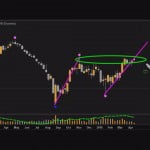 ©Bloomberg
©BloombergIt is said that George Soros possesses a sort of speculator’s “spidey sense”. When markets are poised to take a tumble, the Magyar investor starts to feel a sharp pain in his lower back. For those lacking such financially attuned vertebrae, a better early warning signal can be found in Japan.
Over the past two stock market bubbles — the dotcom boom and the subprime crisis — a curious pattern has emerged. Japan’s Nikkei index hit its peak level several months before the US S&P 500 did. Yet the US economy is larger than Japan’s, and its stock market is more liquid and internationally owned. It should lead the rest of the world’s markets, Japan’s included. So why could this be?
Blame the sizeable US current account deficit, which since the 1980s has seen the country become the world’s largest debtor: the US economy is unable to fund itself and must look to foreigners to plug the gap.
Japan has jumped at the chance, becoming the largest US creditor relative to GDP. Its overall net international investment position has risen from 10 per cent in 1989 to more than 70 per cent by 2014.
As a result, global equities increasingly dance to the tune of the largest global savers and investors — the Japanese. Redenominate the S&P 500 from dollars into Japanese yen, and the mystery becomes clearer. Rather than peak ahead of a crash, in yen terms, the Nikkei has moved in near lockstep with S&P 500 over the past 15 years as Japan’s foreign investment position has steadily increased.
The yen is crucial to this relationship. When Japanese investors venture abroad for returns they sell yen to do so, weakening the currency and driving up foreign markets. When they pull back and repatriate assets, the yen strengthens and markets dip.
This is where Mr Soros’ back may start to hurt. This week the yen hit a 17-month high against the dollar of Y107.63, with some expecting that it could strengthen further.
The last time the Japanese currency pushed the dollar back below Y100, the S&P was trading at about 1,650. Going back to that level, if the pattern holds, would mean a painful 20 per cent tumble for US stocks.

Copyright The Financial Times Limited 2016. You may share using our article tools.
Please don’t cut articles from FT.com and redistribute by email or post to the web.
[“source-Business2community”]





